Pricing Guides & Dictionary of Makers Marks for Antiques & Collectibles

VINTAGE CARNIVAL GLASS:
A Comprehensive Guide to Researching and Collecting
Join the most updated and complete collectibles research online - Learn more...
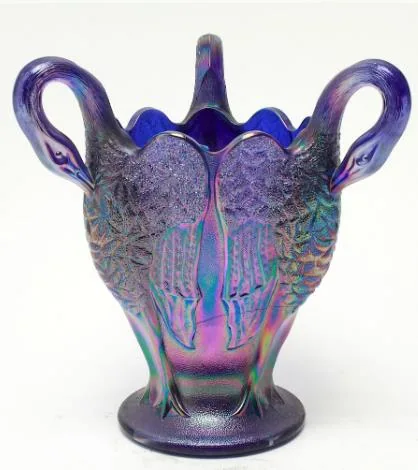 Vintage carnival glass, also known as iridescent glass, is a collectible glassware that has been popular for over a century. The colorful and iridescent finish of carnival glass makes it an attractive addition to any collection. However, with so many different types and colors of carnival glass available, researching and collecting carnival glass can be a daunting task. In this article, we will guide you through the process of researching and collecting vintage carnival glass.
Vintage carnival glass, also known as iridescent glass, is a collectible glassware that has been popular for over a century. The colorful and iridescent finish of carnival glass makes it an attractive addition to any collection. However, with so many different types and colors of carnival glass available, researching and collecting carnival glass can be a daunting task. In this article, we will guide you through the process of researching and collecting vintage carnival glass.
History of Carnival Glass
Carnival glass was first produced in the early 1900s by several glass manufacturers in the United States, including Fenton, Northwood, and Dugan. These manufacturers created iridescent glass by spraying metallic salts onto the surface of the glass while it was still hot. The salts created a chemical reaction that produced an iridescent finish on the glass. The resulting glass was inexpensive to produce and was marketed as a more affordable alternative to expensive art glass.
The popularity of carnival glass peaked in the 1920s, but it saw a resurgence in popularity in the 1950s and 1960s when it was produced in new colors and patterns. Today, vintage carnival glass remains popular among collectors and can be found at antique shops, flea markets, and online auction sites.
Types of Carnival Glass
Carnival glass comes in a variety of colors and patterns. Some of the most popular colors of carnival glass include marigold, amethyst, cobalt blue, green, and red. Carnival glass can also be found in a variety of patterns, including grape and cable, pansy, and peacock.
- Grape and Cable: This pattern features a grapevine and cable design and is one of the most popular carnival glass patterns.
- Pansy: The pansy pattern features a stylized pansy flower and is one of the most sought-after carnival glass patterns.
- Peacock: The peacock pattern features a peacock feather design and is known for its vibrant colors and intricate design.
How to Research Carnival Glass
Researching carnival glass is essential for collectors who want to ensure that they are purchasing authentic and valuable pieces. Here are some steps you can take to research carnival glass:
- Learn about the different manufacturers: Understanding the history of carnival glass and the different manufacturers that produced it can help you identify and authenticate pieces.
- Consult reference books: There are many reference books available on carnival glass that can help you identify patterns, colors, and manufacturers. Some popular reference books include Carnival Glass: The Magic and Mystery by Glen and Stephen Thistlewood and The Collector's Encyclopedia of Carnival Glass by Bill Edwards and Mike Carwile.
- Join online forums: Joining online forums and discussion groups can connect you with other carnival glass collectors and provide you with valuable information and advice.
- Attend antique shows and auctions: Attending antique shows and auctions can give you the opportunity to see and handle carnival glass pieces in person, which can help you identify and authenticate pieces.
How to Collect Carnival Glass
Collecting carnival glass can be a fun and rewarding hobby. Here are some tips for collectors:
- Start small: If you are new to collecting carnival glass, start with a few pieces in a pattern or color that you like. This will help you build a collection over time.
- Set a budget: Carnival glass can range in price from a few dollars to thousands of dollars, depending on the rarity and condition of the piece. Set a budget and stick to it to avoid overspending.
- Inspect pieces carefully: When purchasing carnival glass, inspect the piece carefully for any damage, such as chips or cracks, as this can significantly decrease the value of the piece.
- Display your collection: Displaying your collection in a cabinet or on a shelf can help protect your pieces and allow you to enjoy them.
- Continue learning: Continue to learn about carnival glass by reading reference books and attending antique shows and auctions. This can help you identify and authenticate pieces and make informed purchasing decisions.
Conclusion
Vintage carnival glass is a beautiful and collectible glassware that has been popular for over a century. Researching and collecting carnival glass can be a fun and rewarding hobby, but it's essential to take the time to learn about the history, types, and manufacturers of carnival glass to ensure that you are purchasing authentic and valuable pieces. By following the steps outlined in this guide, you can become a knowledgeable and successful carnival glass collector.
Unlock the true value of your collection with our comprehensive research guides from identifying makers' marks to appraising all kinds of antiques and collectibles, including items featured in this article.
Our up-to-date information will give you an accurate understanding of your items' worth. Don't miss out on this valuable resource - visit our research tools today!
In addition to some examples shown below on this page, you can also search our price guide for your own treasures.
Examples of related items from our Price Guides
-
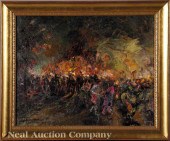 Luis Graner y Arrufi (Spanish/American 1
[more like this]
Luis Graner y Arrufi (Spanish/American 1
[more like this]
-
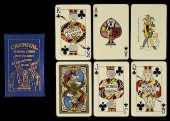 CARNIVAL PLAYING CARD CO. “CARNIVAL” PLA
[more like this]
CARNIVAL PLAYING CARD CO. “CARNIVAL” PLA
[more like this]
-
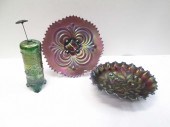 THREE CARNIVAL GLASS VESSELS, COMPRISED
[more like this]
THREE CARNIVAL GLASS VESSELS, COMPRISED
[more like this]
-
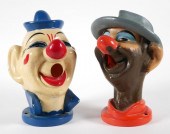 CONEY ISLAND CARNIVAL CLOWN WATER GAME H
[more like this]
CONEY ISLAND CARNIVAL CLOWN WATER GAME H
[more like this]
-
 JANE HORTON, CIRCUS/CARNIVAL DRAWING, 19
[more like this]
JANE HORTON, CIRCUS/CARNIVAL DRAWING, 19
[more like this]
-
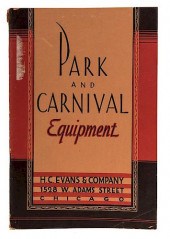 H.C. EVANS & COMPANY. PARK AND CARNIVAL
[more like this]
H.C. EVANS & COMPANY. PARK AND CARNIVAL
[more like this]
-
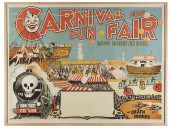 CARNIVAL AND FUN FAIR.Carnival and Fun F
[more like this]
CARNIVAL AND FUN FAIR.Carnival and Fun F
[more like this]
-
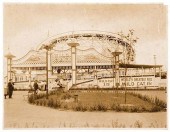 GROUP OF THREE CARNIVAL RIDE PHOTOGRAPHS
[more like this]
GROUP OF THREE CARNIVAL RIDE PHOTOGRAPHS
[more like this]
-
 LLADRO "CARNIVAL COUPLE" #4882 PORCELAIN
[more like this]
LLADRO "CARNIVAL COUPLE" #4882 PORCELAIN
[more like this]
-
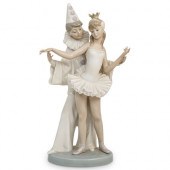 LLADRO "CARNIVAL COUPLE" PORCELAIN FIGUR
[more like this]
LLADRO "CARNIVAL COUPLE" PORCELAIN FIGUR
[more like this]
-
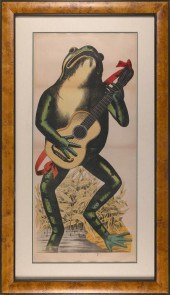 LARGE FRENCH CARNIVAL POSTER LATE 19TH C
[more like this]
LARGE FRENCH CARNIVAL POSTER LATE 19TH C
[more like this]
-
 Hopkins Center Dartmouth Winter Carnival
[more like this]
Hopkins Center Dartmouth Winter Carnival
[more like this]
There are many more auction results available to our members...





